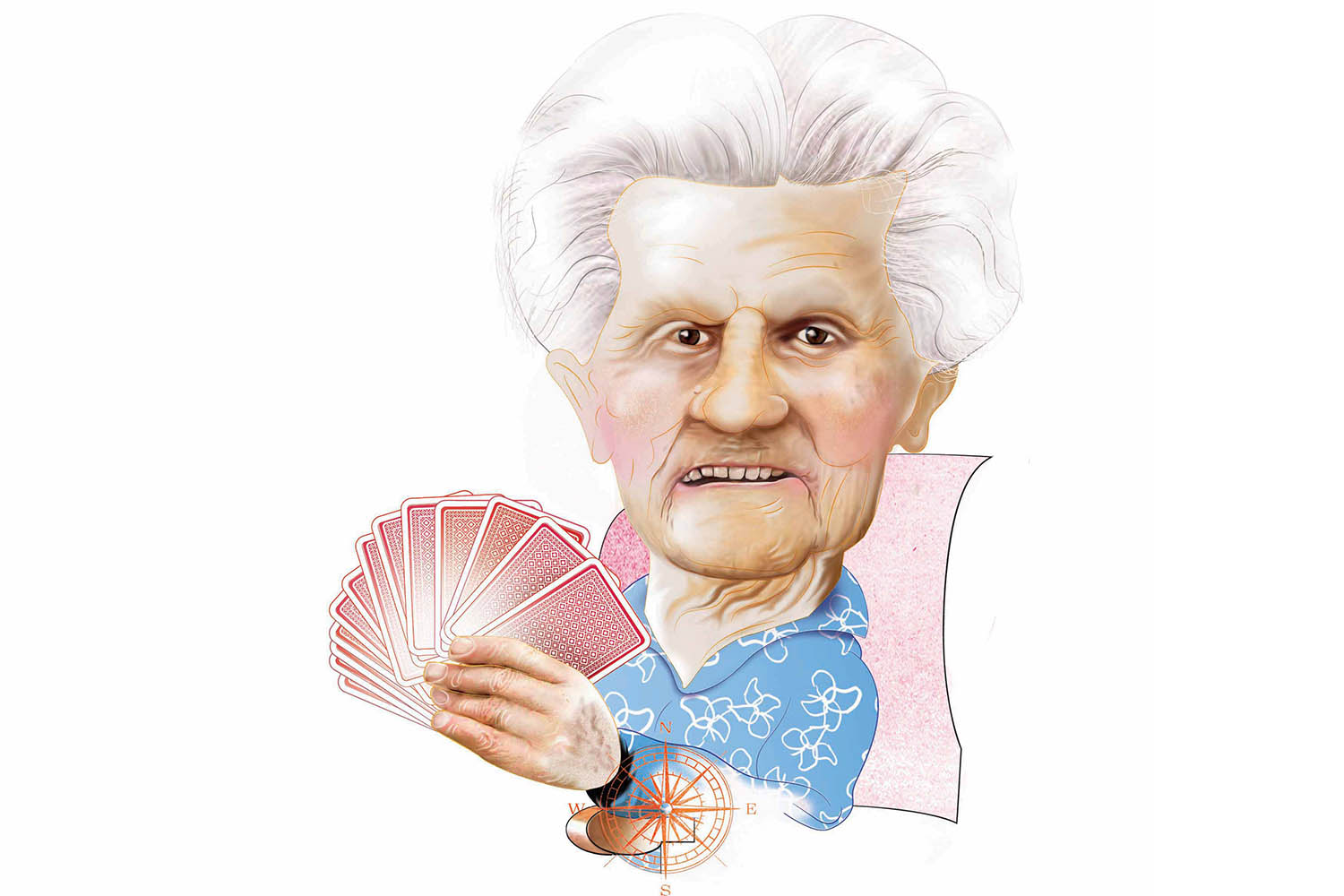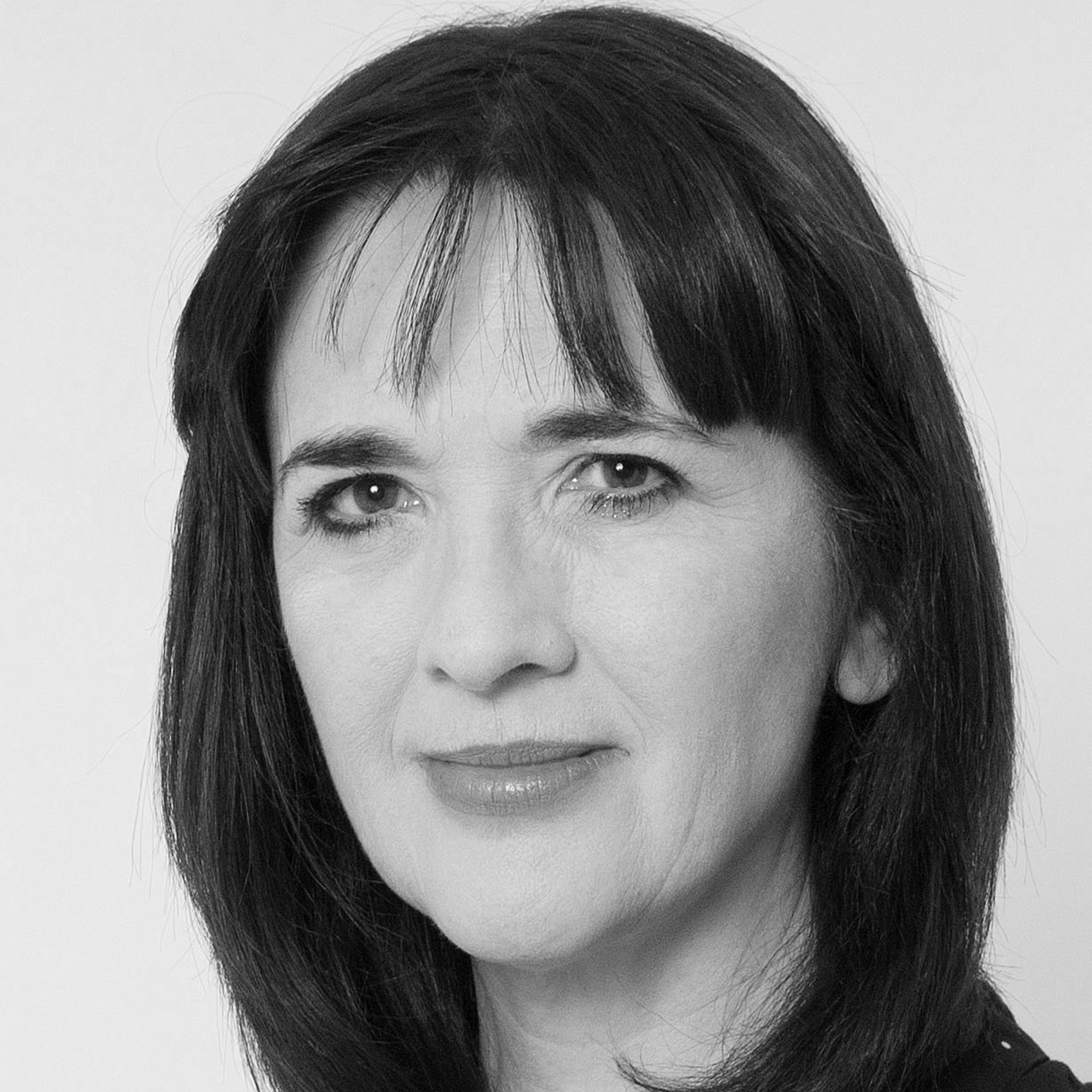Illustration by Andy Bunday
On 21 August, Ethel Caterham celebrates her 116th birthday. The British supercentenarian became the world’s oldest person when Brazilian nun Sister Inah Canabarro Lucas died aged 116 in April.
By anyone’s measure, 116 is a lot of candles on the cake. Caterham was a toddler when the Titanic sank in the Atlantic Ocean in 1912. She lived through the world wars and she was in her mid-40s for Queen Elizabeth II’s coronation. She was a month shy of 60 when Neil Armstrong walked on the moon. She saw the swinging 60s, all the waves of feminism, and every British prime minister since Herbert Asquith.
Born in Hampshire and raised in Wiltshire, Caterham was the seventh of eight children. At 18, she became an au pair to a military family in India. Returning to the UK, she married Norman Caterham in Salisbury Cathedral, where Norman had been a choirboy. Stationed as an army wife in Hong Kong and Gibraltar, she set up a nursery in Hong Kong. She was 97 before she gave up driving. In 2020, at the age of 110, the Guinness Book of Records documented her as one of the oldest people to contract and survive Covid.
Now a great-grandmother living in a Surrey care home, Caterham seems to have no truck with the recurring interest in her advanced age, laughing away the “fuss”. Speaking to BBC Radio Surrey in 2020, she credited her longevity to taking everything in her stride “the highs and the lows”, never arguing with anyone (“I listen and do what I like”), and maintaining a positive attitude: “Say ‘Yes’ to every opportunity because you never know where it might lead.”
Note the lack of prattle and blether about plasma therapy, genome analysis, neuro-wave stimulation or any other bio-hack beloved of mortality-defying tech bros. Yet here Caterham is: the world’s most successful super-ager. And in that long life – the sheer volume, spread and fascination of it – she arguably becomes something else: a living rebuke to the absurdity of ageism, and the derangement of our toxic relationship with ageing.
She had more than a little brio – working in India as a teenager, starting a business in Hong Kong
It’s a thought: in what context does one place the world’s oldest person in a society and culture increasingly riven with ageism? The World Health Organization (WHO) estimates that, by 2050, the number of over-60s will have almost doubled to 22%, while the over-80s cohort is expected to triple in size. Elsewhere, ageism remains a multi-headed hydra, systemically impacting everything from health to housing to employment to financial security.
Carole Easton is the chief executive of the Centre for Ageing Better, which runs the Age Without Limits campaign. She explains that there is a lack of recognition for the variety of older people like Caterham: “One of the ways in which ageism demonstrates itself is by making millions of people homogenous: we’re all old; we’re all frail; we’re all vulnerable; we’re all totally dependent.”
David Sinclair is chief executive of the International Longevity Centre, which advises governments and businesses on strategising for longer life. He tells me that another way ageism operates is to patronise elders with what he terms benevolent paternalism: “We say to younger people: to be part of society, you’ve got to use technology and learn. To older people, we tend to say: don’t worry, dearie, you’re 80, you’ve got nothing to offer any more.”
Both Easton and Sinclair note the intersection between ageism and sexism, and the myriad ways women have it worse in a society where female value is perceived to vanish in a puff of witchy green smoke along with their sexual appeal. While female celebrities don’t represent all women, they could be heeded as a warning for what happens when older females decline to leave the stage gracefully. At present, an entire wing of the global media seems dedicated to “what Madonna has done to her face”, with scant acknowledgment of the pressures of ageing when every line and pore is scrutinised and mocked all over the world.
At 116, Caterham falls into the extreme old-age bracket, to whom – thankfully – society is generally kinder. Certainly, it’s where previously reviled older stars – such as Yoko Ono, 92 – end up rehabilitated as cultural folk heroes; in Ono’s case, deservedly so, but few bothered with the earnest plaudits when she was 55. It seems to be where we are now with the ageism circus: the middle-aged attracting the most ageist venom (what was the “Karen”-phenomenon if not a sustained vicious global campaign to intimidate middle-aged women into shutting up?) while the very old are celebrated.
The more you look at Caterham’s life, it becomes apparent the ordinary woman was never ordinary at all. Rather, she is a gold-standard survivor – the last verified person to have been born between 1900 and 1909 – and one with more than a little brio and swank, if you don’t mind: hopping over to India to work as a teenager; getting wed in Salisbury Cathedral; starting her own business as a young woman in Hong Kong. Then there is what’s happening around her: the sociohistorical wallpaper, as it were. With all that she’s witnessed, Caterham has the whiff of a “Zelig”, referring to the 1983 Woody Allen mockumentary where an ordinary person keeps being inserted into world events.
Or, less fancifully, an everywoman, living her life as most of us do against the backdrop of change – wars, moon landings, rising hemlines – taking it all in, then getting straight back to her own concerns.
What is behind the smoke and mirrors of ageism? Contempt, fear, or denial of what is to come? And even then, only if we’re extremely lucky. Maybe this is Caterham’s secret: the super-ager of super-agers knows she is fortunate. To live when she did, how she did, witnessing what she did, and with the positive attitude that says “Yes” to every opportunity because you never know where it might lead. Happy Birthday, Ethel Caterham, here’s to Being There.
Ethel Caterham
Born 21 August 1909
Work Entrepreneur
Hobbies Classical music
Family Widow. Three grandchildren and five great-grandchildren

